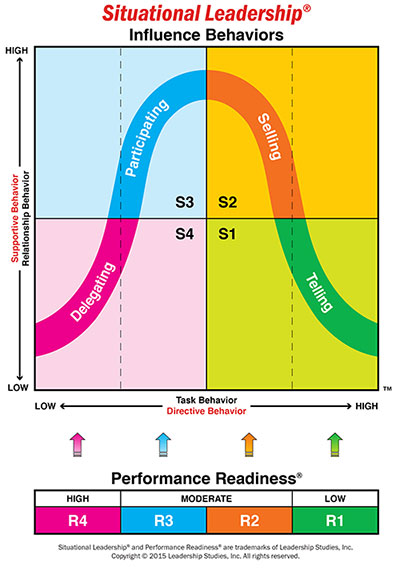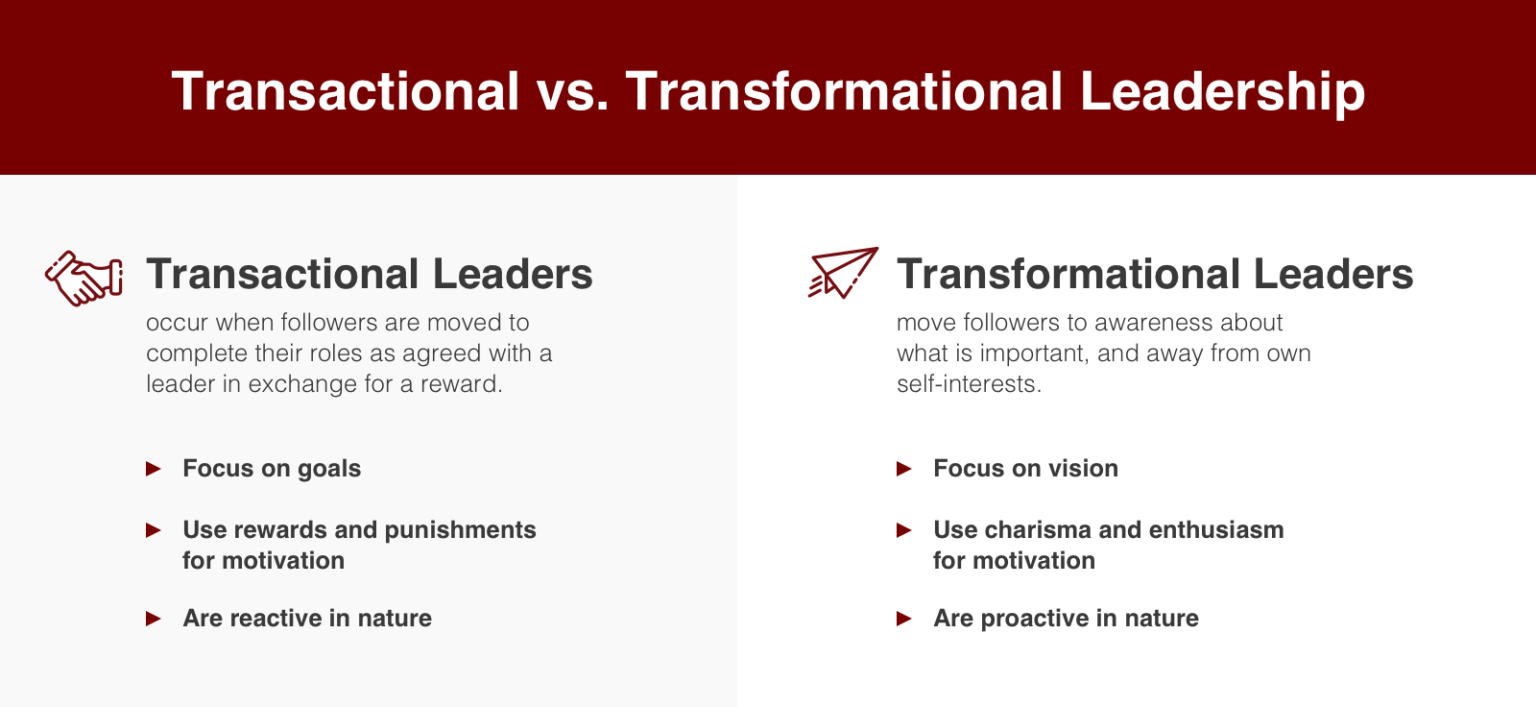
What is Your Leadership Style? Charting Your Course on the High Seas of Success
What is Your Leadership Style? Charting Your Course on the High Seas of Success.
There are countless ways to navigate the turbulent waters of leadership. Some captains command with a booming voice, their vision a beacon guiding the crew through uncharted territories. Others lead with a gentle hand, nurturing potential and fostering a spirit of collaboration. The question hangs heavy in the salty air: what is your leadership style?
There’s no single “best” approach, no one-size-fits-all captain’s hat. However, understanding the diverse landscape of leadership styles can equip you to chart your own successful course. Explore these six common styles, each a unique sail catching the wind of progress: What is Your Leadership Style?
Transformational Leaders (What is Your Leadership Style? )
These visionary captains paint a breathtaking picture of what could be, inspiring their crew to push beyond perceived limitations. With their infectious enthusiasm and clear communication, they empower individuals to take ownership and soar to new heights. Are you a transformational leader. What is your leadership Style ?
Transformational leaders are visionary captains who possess the remarkable ability to articulate an inspiring and captivating picture of what the future could hold. Their leadership style goes beyond the ordinary; it transcends the status quo and paints a breathtaking landscape of possibilities. These leaders have a unique talent for fueling the imagination of their crew, encouraging them to dream big and push beyond perceived limitations.
One of the defining characteristics of transformational leaders is their infectious enthusiasm. They radiate a passion for their vision that becomes a contagious force, spreading through the entire crew. This enthusiasm is not just a surface-level display but a genuine and powerful energy that ignites motivation and commitment within the team. In the presence of a transformational leader, individuals feel a sense of excitement and purpose, propelling them to invest their best efforts in the shared journey.
Clear communication is another hallmark of transformational leaders. They possess the ability to articulate their vision with clarity, ensuring that every member of the crew understands the destination and the path to get there. This transparency fosters a deep sense of trust and commitment among team members, as they can align their individual efforts with the collective goal.
Empowerment lies at the core of a transformational leader’s approach. Rather than relying on a top-down command structure, these leaders empower individuals to take ownership of their roles and responsibilities. By instilling a sense of ownership, they create a culture where each team member feels valued and influential in contributing to the overall success of the mission.
Transformational leaders inspire their crew to soar to new heights both personally and professionally. They recognize the potential within each individual and provide the support and encouragement needed to foster growth. In this empowering environment, team members are more willing to take risks, embrace challenges, and explore their capabilities beyond what they thought possible.
Ultimately, the impact of transformational leaders extends beyond immediate goals; it influences the long-term development and success of individuals and the entire team. By fostering a culture of innovation, continuous improvement, and shared purpose, transformational leaders leave an enduring legacy that shapes the organization’s trajectory far into the future. Through their visionary leadership, they not only guide their crew through the present challenges but also chart a course toward a future filled with achievement and fulfillment.

Servant Leaders (What is Your Leadership Style? )
Humble and empathetic, these captains prioritize the well-being of their crew. They create a haven of trust and collaboration, where every voice is heard and valued. By placing the needs of others first, they cultivate a loyal and dedicated team, always ready to weather any storm. Are you a Servant leader. What is your leadership Style ?
Servant leaders embody a leadership style characterized by humility, empathy, and a genuine commitment to prioritizing the well-being of their crew above all else. These captains go beyond traditional leadership paradigms by flipping the organizational hierarchy and placing themselves in a position of service to their team members. This approach creates a unique and nurturing environment where the needs of the individuals within the crew are at the forefront.
Humble and empathetic, servant leaders don’t seek the spotlight for personal recognition or glory. Instead, they operate with a selfless mindset, acknowledging their own strengths and weaknesses while recognizing the talents and potential in each team member. This humility establishes an atmosphere of openness and approachability, making the leader more relatable and fostering a sense of camaraderie within the crew.
One of the key attributes of servant leaders is their commitment to creating a haven of trust and collaboration. By building trust through consistent and transparent communication, these leaders create a foundation for a strong and cohesive team. Team members feel comfortable expressing their ideas, concerns, and opinions, knowing that their voices are not only heard but also genuinely valued. This trust forms the basis for a collaborative culture where everyone contributes to the collective success of the team.
Servant leaders prioritize the well-being of their crew members in both personal and professional aspects. They are attentive to the individual needs of team members and strive to create an inclusive and supportive work environment. This focus on the holistic development of individuals fosters a sense of loyalty and dedication within the team. Team members, feeling genuinely cared for, are more likely to go above and beyond in their roles, knowing that their leader has their best interests at heart.
In times of challenge or adversity, servant leaders shine. Their empathetic nature allows them to understand and respond to the emotional needs of their team members. By placing the needs of others first, they cultivate resilience within the team, creating a sense of unity that enables them to weather any storm together. This dedication to the collective well-being ensures that the team remains strong and cohesive even during challenging times.
Ultimately, servant leaders exemplify a form of leadership that transcends traditional notions of authority. By focusing on serving and uplifting their team, they create a positive and empowering culture that fosters growth, loyalty, and a shared commitment to success. In doing so, servant leaders leave a lasting impact on both individuals and the overall effectiveness of the team or organization they lead.

Authoritative Leaders (What is Your Leadership Style? )
Decisive and confident, these captains take the helm with steady hands. They make quick decisions, delegate tasks effectively, and hold their crew accountable. While their firm grip can be invaluable in turbulent times, caution is key – overbearing control can dampen the ship’s spirit. Are you a Authoritative leader. What is your leadership Style ?
Authoritative leaders are captains who steer the ship with decisiveness and confidence, possessing the ability to take charge and navigate through challenges with steady hands. This leadership style is marked by a commanding presence, quick decision-making, effective delegation, and a commitment to holding the crew accountable for their roles and responsibilities.
Decisiveness and confidence are foundational traits of authoritative leaders. In the face of uncertainty or ambiguity, these captains make swift and well-informed decisions. They instill a sense of assurance within the crew, conveying that there is a capable leader at the helm who can guide them through turbulent waters. The authoritative leader’s decisiveness is a beacon that provides direction and clarity in times of ambiguity.
Effective delegation is another hallmark of authoritative leadership. These captains understand the importance of distributing tasks according to the strengths and capabilities of their team members. By entrusting individuals with specific responsibilities, authoritative leaders ensure that each crew member plays a vital role in the overall success of the mission. This delegation fosters a sense of ownership and accountability among team members.
Accountability is a core principle for authoritative leaders. They establish clear expectations and standards for performance, and they hold every member of the crew responsible for meeting these benchmarks. This commitment to accountability not only ensures that tasks are completed efficiently but also contributes to a culture of discipline and responsibility within the team.
While the firm grip of authoritative leaders can be invaluable in navigating turbulent times, caution is essential. Overbearing control has the potential to dampen the ship’s spirit and stifle creativity and initiative among team members. The challenge for authoritative leaders lies in finding the right balance – maintaining control and structure without suppressing the individual and collective potential of the crew.
In times of crisis or rapid change, authoritative leaders provide a sense of stability and direction. Their ability to make quick decisions and delegate tasks ensures that the crew can respond promptly to challenges. However, it is crucial for these leaders to remain open to input from their team, recognizing that collaboration and diverse perspectives can contribute to better decision-making.
In conclusion, authoritative leaders play a vital role in guiding their teams through challenges with decisiveness and confidence. Their steady hands at the helm provide a sense of security and direction, and their commitment to accountability fosters a disciplined and high-performing crew. However, they must exercise caution to avoid stifling creativity and initiative, recognizing that a healthy balance between control and empowerment is essential for sustained success.

Democratic Leaders (What is Your Leadership Style? )
These captains value the wisdom of the collective. They involve their crew in the decision-making process, encouraging open communication and seeking diverse perspectives. While consensus-building can sometimes slow the ship’s pace, it fosters buy-in and strengthens the bonds of collaboration. Are you a Democaratic leader. What is your leadership Style ?
Democratic leaders, in the realm of leadership, are captains who prioritize the collective wisdom of their crew. Unlike authoritative leaders who make decisions independently, democratic leaders actively involve their team members in the decision-making process. This leadership style fosters open communication, values diverse perspectives, and emphasizes collaboration within the crew.
At the core of democratic leadership is the recognition that the collective intelligence of the team is a valuable asset. These captains create an inclusive environment where every crew member has a voice and is encouraged to contribute their insights. By involving the crew in decision-making, democratic leaders leverage the diverse expertise and experiences within the team, tapping into a rich source of ideas and perspectives.
Open communication is a fundamental aspect of democratic leadership. Captains in this style facilitate transparent discussions where team members feel comfortable expressing their opinions and concerns. This free flow of information creates an atmosphere of trust, as the crew recognizes that their input is not only welcomed but also considered in the decision-making process. The emphasis on open communication strengthens the bonds between the leader and the crew.
Consensus-building is a key characteristic of democratic leaders, and while it may sometimes slow the ship’s pace, it contributes to long-term benefits. Rather than imposing decisions unilaterally, these captains seek agreement among the crew. This process fosters buy-in and commitment from team members, as they feel a sense of ownership over the decisions made. The collaborative nature of consensus-building enhances the crew’s cohesion and dedication to shared goals.
While the democratic leadership style empowers the crew and promotes inclusivity, it does come with challenges. Decision-making may take longer due to the need for consensus, and divergent opinions can complicate the process. However, the potential for better-quality decisions, increased morale, and a more engaged and committed crew often outweigh these challenges.
Democratic leaders understand that the strength of the team lies in its diversity. By actively involving the crew in decision-making, these captains harness the collective intelligence and creativity of their team members. This approach not only leads to better-informed decisions but also creates a positive and collaborative culture that extends beyond individual tasks to strengthen the overall effectiveness of the crew.
In summary, democratic leaders prioritize the wisdom of the collective, valuing open communication, diverse perspectives, and consensus-building. While this approach may require more time for decision-making, the resulting commitment and collaboration from the crew contribute to a resilient and high-performing team. The democratic leadership style is an effective way to capitalize on the strengths and contributions of every member on the journey toward shared success.These demanding captains set the bar high, both for themselves and their crew. Their relentless drive and high standards can be incredibly motivating, pushing everyone to excel. However, it’s crucial to ensure expectations are realistic and that support is readily available, lest the crew become overwhelmed in the relentless pursuit of perfection.

Pacesetting Leaders (What is Your Leadership Style? )
Pacesetting leaders are captains who set exceptionally high standards for themselves and their crew, embodying a relentless drive for excellence. This leadership style is characterized by a demanding and ambitious approach that motivates everyone on the team to strive for and achieve outstanding results. Pacesetters lead by example, expecting nothing less than peak performance from themselves and inspiring the same from their crew. Are you a Pacesetting leader. What is your leadership Style ?
The defining trait of pacesetting leaders is their ability to set the bar at an elevated level. They establish ambitious goals, challenging the crew to reach new heights and consistently deliver top-notch performance. This commitment to excellence can be incredibly motivating, instilling a sense of purpose and achievement within the team. Pacesetters thrive on pushing boundaries and exceeding expectations, fostering a culture of continuous improvement.
The relentless drive exhibited by pacesetting leaders sets a dynamic tone for the crew. Their enthusiasm and energy become contagious, encouraging team members to push their own limits and surpass what they thought was possible. The high standards set by pacesetters not only drive individual performance but also elevate the overall capabilities of the entire crew.
However, there is a delicate balance to be maintained in the pacesetting leadership style. While high expectations can be motivational, it is crucial to ensure that these expectations are realistic and achievable. Setting unattainable goals can lead to frustration and burnout among the crew, diminishing morale and hindering overall performance. Pacesetting leaders must be mindful of the fine line between inspiring excellence and overwhelming the team.
Support is a critical component in the pacesetting leadership approach. Leaders need to provide the necessary resources, guidance, and encouragement to help the crew meet the demanding standards set before them. Offering constructive feedback and recognition for achievements reinforces the team’s sense of accomplishment and motivates them to continue striving for excellence.
Pacesetting leaders must be aware of the potential challenges that come with this style, such as the risk of creating a stressful work environment or fostering a culture of competition at the expense of collaboration. It is essential for pacesetters to balance their drive for high performance with a focus on the well-being and development of their team members.
In conclusion, pacesetting leaders play a crucial role in pushing the boundaries of what a team can achieve. Their demanding and ambitious approach inspires a culture of excellence and continuous improvement. To ensure sustainable success, pacesetters must strike a balance by setting realistic expectations, providing necessary support, and fostering a positive and collaborative environment where the pursuit of perfection is met with a healthy and supportive team dynamic.
Coaching Leaders (What is Your Leadership Style? )
These nurturing captains see the potential in every member of their crew. They provide constructive feedback, guidance, and opportunities for growth. By investing in the development of others, they build a resilient and adaptable team, prepared to tackle any challenge. Are you a Coaching leader. What is your leadership Style ?
Coaching leaders are captains who adopt a nurturing and supportive approach to leadership, recognizing and cultivating the potential within every member of their crew. This style is characterized by a focus on providing constructive feedback, offering guidance, and creating opportunities for growth and development. Coaching leaders invest in the personal and professional well-being of their team members, aiming to build a resilient and adaptable crew capable of facing any challenge.
One of the foundational principles of coaching leaders is their ability to see and appreciate the unique strengths and potential in each individual. They view their crew members not just as employees with specific roles but as individuals with untapped capabilities waiting to be developed. This mindset creates a positive and empowering environment where team members feel valued and encouraged to explore their full potential.
Constructive feedback is a key component of coaching leadership. Rather than solely pointing out mistakes, coaching leaders provide feedback that is geared towards improvement and development. They offer guidance on areas of strength and areas that require enhancement, fostering a continuous learning mindset within the team. This approach creates a culture where mistakes are seen as opportunities for growth, and individuals are motivated to strive for excellence.
Guidance is another essential aspect of coaching leadership. These captains actively mentor and guide their team members, sharing insights, knowledge, and experiences to help them navigate challenges and make informed decisions. By acting as mentors, coaching leaders contribute to the professional and personal development of their crew, creating a supportive structure that enables individuals to learn and grow.
Creating opportunities for growth is a proactive measure taken by coaching leaders. They identify and provide challenges and projects that allow team members to stretch their capabilities and acquire new skills. This intentional focus on development prepares the crew to adapt to changing circumstances and take on more significant responsibilities in the future.
The investment in the development of others goes beyond immediate tasks and projects. Coaching leaders foster a resilient and adaptable team by promoting a culture of continuous learning. This adaptability is a valuable asset in a dynamic and ever-changing environment, enabling the crew to tackle challenges with creativity and innovation.
In conclusion, coaching leaders play a pivotal role in creating a positive and growth-oriented work environment. By recognizing and nurturing the potential in each team member, providing constructive feedback, and actively guiding and developing their crew, coaching leaders build a resilient and adaptable team. This leadership style fosters a culture of continuous improvement, preparing individuals to face challenges with confidence and embrace opportunities for growth and success.

Additional Leadership Styles:
Charismatic Leaders
These leaders have a magnetic personality and inspire devotion in their followers. Skilled communicators with a strong vision, charismatic leaders create a compelling atmosphere that captivates their crew. Are you a charismatic leader. What is your leadership Style ?
Charismatic leaders are captivating individuals who possess a magnetic personality and have the ability to inspire deep devotion and enthusiasm in their followers. This leadership style is characterized by a combination of charm, confidence, and an extraordinary ability to communicate a compelling vision. Charismatic leaders create an atmosphere that is not only engaging but also fosters a sense of connection and commitment among their crew.
The defining feature of charismatic leaders is their magnetic personality. They exude a certain charm, confidence, and energy that draw people toward them. This magnetism goes beyond traditional leadership traits and often includes an infectious enthusiasm that can uplift and energize those around them. Charismatic leaders have a natural ability to make others feel valued and appreciated, creating a positive and engaging environment within the team.
Skilled communication is a hallmark of charismatic leadership. These leaders possess the ability to articulate a strong and inspiring vision for the future. Through effective verbal and nonverbal communication, they convey their ideas with passion and clarity, making it easy for the crew to understand and align with the overarching goals. Charismatic leaders are often adept storytellers, using narratives to convey their vision in a way that resonates deeply with their audience.
The compelling atmosphere created by charismatic leaders goes beyond words; it involves creating an emotional connection with their crew. Through their charisma, they inspire a sense of trust, belief, and loyalty among followers. People are drawn to charismatic leaders not just because of their ideas but because of the personal connection they establish. This emotional resonance strengthens the bond between the leader and the team, fostering a collective commitment to the shared vision.
Charismatic leaders often excel in navigating challenging situations with grace and optimism. Their ability to maintain a positive and hopeful outlook, even in the face of adversity, inspires confidence and resilience within the crew. This optimism can be a powerful motivator, encouraging the team to persevere through difficulties with a shared belief in achieving success.
While charismatic leadership can be highly effective, it is essential for leaders to strike a balance. Overreliance on charisma without substance or an overemphasis on the leader’s personality can lead to challenges when it comes to long-term strategic planning and decision-making. A charismatic leader must complement their charm with effective organizational skills and a clear strategy for achieving goals.
In conclusion, charismatic leaders possess a unique ability to create a compelling and engaging atmosphere that captivates their crew. Through their magnetic personality, skilled communication, and ability to inspire devotion, charismatic leaders foster a sense of connection and commitment within the team. While charisma is a powerful leadership trait, it is most effective when paired with strategic vision, authenticity, and a genuine concern for the well-being of the crew.

Visionary Leaders
With a clear and compelling vision for the future, visionary leaders excite their crew. Capable of making tough decisions and taking risks, they drive the ship forward toward their goals. Are you a Visionary leader. What is your leadership Style ?
Visionary leaders are individuals who possess a clear and compelling vision for the future, and they have the ability to inspire and excite their crew by articulating that vision. This leadership style is characterized by a forward-thinking mindset, the capacity to make tough decisions, and a willingness to take calculated risks in order to propel the ship toward its goals.
The defining feature of visionary leaders is their ability to see beyond the present circumstances and imagine a future that is both inspiring and attainable. They have a well-defined vision that outlines the direction the team should move in and the goals they should strive to achieve. This vision serves as a guiding light, providing clarity and purpose for the crew. Visionary leaders excel at communicating this vision in a way that resonates with their team, fostering enthusiasm and commitment.
Visionary leaders are not only dreamers but also pragmatic decision-makers. They have the capability to make tough decisions that align with the overarching vision. This may involve prioritizing certain initiatives, allocating resources strategically, or navigating through challenges with resilience and determination. The ability to make difficult choices ensures that the crew stays on course, even in the face of adversity.
Taking risks is another key characteristic of visionary leaders. They understand that progress often involves stepping outside the comfort zone and embracing uncertainty. While calculated risks can lead to innovation and growth, visionary leaders carefully weigh the potential benefits against the drawbacks. By encouraging a culture that embraces experimentation and learning from failures, they create an environment where the crew feels empowered to take calculated risks in pursuit of the shared vision.
The excitement generated by visionary leaders stems from their infectious passion for the future they envision. They are capable of instilling a sense of purpose and possibility within the crew, making them eager to contribute to the realization of the collective goals. Visionary leaders inspire creativity and innovation by challenging the status quo and encouraging the exploration of new ideas that align with the overall vision.
While visionary leadership can be highly effective, it requires ongoing communication and collaboration. Visionary leaders must ensure that the crew understands the vision and feels a sense of ownership in its realization. This involves fostering an environment where open communication is encouraged, and ideas from all members are valued.
In conclusion, visionary leaders play a crucial role in steering the ship toward a brighter future. Through their clear and compelling vision, ability to make tough decisions, and willingness to take calculated risks, they inspire and excite their crew. The collective enthusiasm generated by visionary leadership propels the team forward, fostering a culture of innovation, collaboration, and continuous improvement.

Strategic Leaders
Thinking ahead and making plans for the future, strategic leaders understand the big picture and make decisions in the best interests of the organization. Are you a Strategic leader. What is your leadership Style ?
Strategic leaders are individuals who possess the ability to think ahead, make plans for the future, and make decisions that are in the best interests of the organization. This leadership style is characterized by a focus on the big picture, a comprehensive understanding of the organization’s goals, and the capacity to formulate and execute strategies that lead to long-term success.
The defining feature of strategic leaders is their forward-thinking mindset. They go beyond day-to-day operations and take a proactive approach to anticipate future challenges and opportunities. Strategic leaders engage in careful analysis and planning, considering the broader context in which the organization operates. This involves a deep understanding of industry trends, market dynamics, and potential disruptions that may impact the organization’s trajectory.
Strategic leaders excel in creating and implementing plans that align with the overarching goals of the organization. They consider the organization’s mission, vision, and values while formulating strategies that guide decision-making at every level. These leaders prioritize initiatives that contribute to the long-term success and sustainability of the organization, ensuring that short-term gains do not compromise the organization’s future viability.
Understanding the big picture is a key strength of strategic leaders. They possess a holistic view of the organization, recognizing the interconnectedness of various departments, functions, and stakeholders. This comprehensive understanding allows them to make informed decisions that consider the potential ripple effects across the organization. Strategic leaders prioritize initiatives that contribute to the overall health and growth of the organization.
Decision-making in the best interests of the organization is a hallmark of strategic leadership. These leaders assess situations from multiple perspectives, considering the potential impact on the organization’s mission and objectives. They are not swayed solely by immediate gains or losses but evaluate decisions based on their alignment with the long-term strategy and the organization’s values. This approach ensures that decisions contribute to the sustained success of the organization.
Strategic leaders also possess effective communication skills to convey the organizational vision and strategy to the entire team. They create a shared understanding of the direction the organization is heading, fostering alignment and commitment among the team members. Communication is a key tool for ensuring that everyone within the organization is working toward common goals and understands their role in achieving the strategic vision.
While strategic leadership is essential for organizational success, it requires adaptability and continuous learning. Strategic leaders must remain agile in response to changing external factors and be willing to adjust strategies accordingly. Additionally, fostering a culture of innovation and encouraging feedback from team members can enhance the effectiveness of strategic leadership.
In conclusion, strategic leaders play a pivotal role in shaping the future success of the organization. Through their forward-thinking approach, understanding of the big picture, and decision-making in the best interests of the organization, they guide the development and execution of strategies that lead to long-term prosperity. Strategic leadership is a dynamic and adaptive style that contributes to the resilience and sustainability of the organization in an ever-changing business landscape.

Situational Leaders
Adapting their leadership style to the situation at hand, situational leaders can be directive when needed or supportive and collaborative when the context requires it. Are you a Situational leader. What is your leadership Style ?
Situational leaders are individuals who excel at adapting their leadership style to the specific circumstances they encounter. Recognizing that different situations call for different approaches, situational leaders can seamlessly transition between being directive when necessary and adopting a supportive and collaborative stance based on the context at hand.
The defining characteristic of situational leaders is their flexibility and responsiveness to the demands of a given situation. They understand that one size does not fit all when it comes to leadership, and they tailor their approach to meet the needs of their team and the challenges they face. This adaptability allows situational leaders to navigate a variety of scenarios with skill and effectiveness.
In situations that require clear guidance and a decisive approach, situational leaders adopt a directive style. They provide explicit instructions, set clear expectations, and make decisions with authority. This directive approach is particularly valuable in times of urgency, crisis, or when team members may require more explicit guidance to achieve objectives.
Conversely, in contexts where collaboration, teamwork, and input from team members are essential, situational leaders shift to a more supportive and collaborative style. They encourage open communication, seek input from team members, and foster an environment where ideas and opinions are valued. This collaborative approach is effective when creativity, problem-solving, and collective decision-making are paramount.
Situational leaders base their leadership decisions on a thorough assessment of the current situation, considering factors such as the complexity of the task, the skill level and experience of the team, and the urgency of the situation. This situational analysis guides leaders in determining the most appropriate leadership style to employ.
The effectiveness of situational leadership lies in its ability to match leadership behaviors with the evolving needs of the team and the challenges they face. Situational leaders are skilled at recognizing when to provide clear direction, when to offer support and encouragement, and when to empower team members to take the lead. This dynamic approach ensures that the team receives the right level of guidance and support based on the specific circumstances.
While situational leadership can be highly effective, it requires strong communication skills and a keen understanding of the team’s dynamics. Leaders must be adept at reading the situational cues, assessing the readiness of team members, and adjusting their approach accordingly. This style also emphasizes the importance of ongoing communication to ensure that the team is aligned with the leader’s adaptive strategies.
In conclusion, situational leaders demonstrate a versatile and responsive approach to leadership, adjusting their style to meet the unique demands of each situation. By seamlessly transitioning between directive and supportive behaviors based on the context, situational leaders optimize team performance and contribute to effective problem-solving in a variety of scenarios.

Transactional Leaders
Focusing on providing rewards for good performance and punishments for poor performance, transactional leaders can be effective in the short term but may lead to long-term issues such as low morale and a lack of innovation. Are you a Transactional leader. What is your leadership Style ?
Transactional leaders are characterized by their focus on the exchange of rewards for good performance and punishments for poor performance within the organizational setting. This leadership style operates on the principles of a transactional relationship, where clear expectations, consequences, and outcomes are communicated. While transactional leadership can be effective in the short term, it may pose challenges in the long run, including issues such as low morale and a lack of innovation.
The defining feature of transactional leaders is their emphasis on a structured and results-oriented approach. They establish clear expectations and guidelines for their team members, outlining the specific tasks, goals, and standards that need to be met. In return for meeting these expectations, team members receive rewards such as recognition, bonuses, or promotions. Conversely, failure to meet expectations may result in consequences such as reprimands, loss of privileges, or other forms of punishment.
Transactional leaders excel in creating a predictable and structured work environment. This clarity can be beneficial in situations where tasks require precision, efficiency, and adherence to established procedures. The transactional approach is particularly effective in roles or industries where compliance and strict adherence to guidelines are critical for success.
However, the transactional leadership style has its limitations, especially when it comes to fostering long-term organizational health and employee engagement. One potential drawback is the risk of creating a workplace culture driven solely by rewards and punishments. Over time, this may lead to a reliance on extrinsic motivation, where employees are primarily motivated by external factors rather than intrinsic satisfaction or passion for their work.
Low morale can be a consequence of transactional leadership, as employees may feel motivated solely by the desire to avoid punishment or gain rewards, rather than a genuine commitment to the organization’s mission. This can result in a lack of enthusiasm, creativity, and dedication among team members, ultimately hindering overall performance and innovation.
Moreover, a transactional leadership style may stifle innovation within the organization. The emphasis on following established procedures and meeting predefined expectations may discourage employees from thinking outside the box, taking risks, or suggesting new and creative solutions. The fear of negative consequences can create a risk-averse culture that hampers the organization’s ability to adapt to change and capitalize on opportunities for growth.
While transactional leadership can be effective in certain contexts, successful leaders often complement it with elements of transformational or visionary leadership. This hybrid approach allows leaders to balance the need for structure and efficiency with the promotion of employee engagement, intrinsic motivation, and a culture of innovation.
Transactional vs. Transformational Leadership
Transactional leadership centers around processes and control, relying on a stringent management structure. Conversely, transformational leadership is centered on inspiring others to follow, necessitating a high level of coordination, communication, and cooperation.
In essence, the distinction boils down to this: transactional leadership is concerned with the mechanics of accomplishing tasks, while transformational leadership focuses on motivating people to engage in those tasks.

For leaders within their respective domains, the practical manifestation of these leadership styles is not a clear dichotomy but rather a continuum.
In conclusion, transactional leaders focus on the exchange of rewards and punishments to drive performance in the short term. While effective in structured environments, this style may lead to long-term challenges such as low morale and a lack of innovation. Successful leaders recognize the need for a balanced approach that combines transactional elements with strategies that foster intrinsic motivation, creativity, and a positive organizational culture.
Ultimately, What is Your Leadership Style? the best leadership style isn’t a rigid label, but a dynamic compass guiding you through the ever-changing seas of life. The most successful captains are those who can adapt their approach based on the winds of circumstance, drawing from a diverse repertoire of skills and strategies.
Your Leadership Journey:
- Reflection: Cast your mind back on past triumphs and tribulations. What actions steered the ship through choppy waters? What qualities resonated with your crew?
- Seek Feedback: Don’t navigate alone. Ask your crew for honest feedback. What leadership qualities do they appreciate? What areas could benefit from a course correction?
- Continuous Learning: Devour resources on leadership styles, from classic models to modern concepts. Experiment with different approaches in low-pressure situations, honing your captain’s instinct.
Remember, the greatest leaders are lifelong learners, constantly refining their skills and adapting to the ever-changing tides. Embrace the dynamic nature of leadership, and set sail on a journey of discovery, unlocking your inner captain and charting your own unique course to success on the high seas of life.





